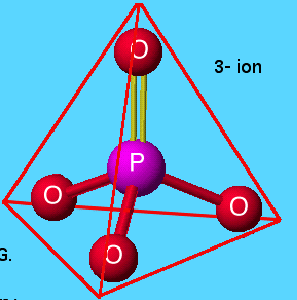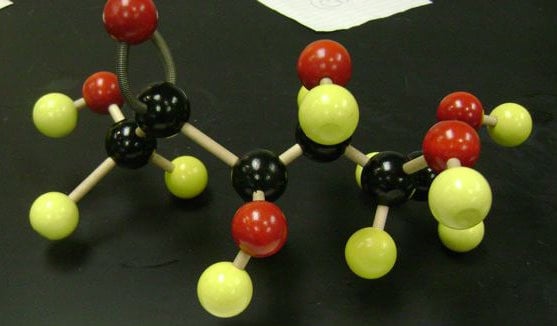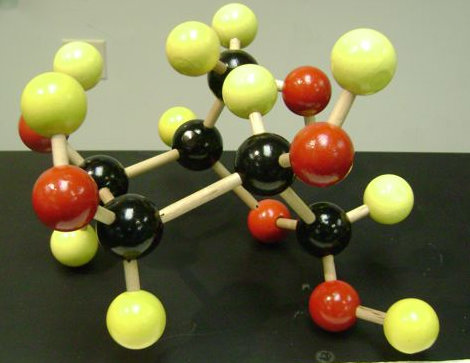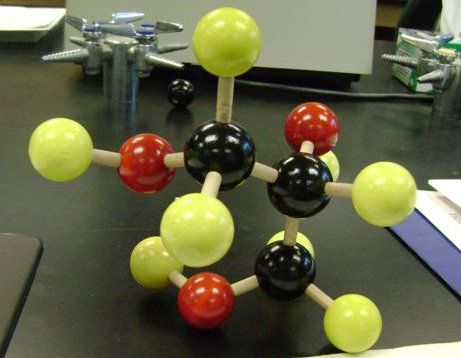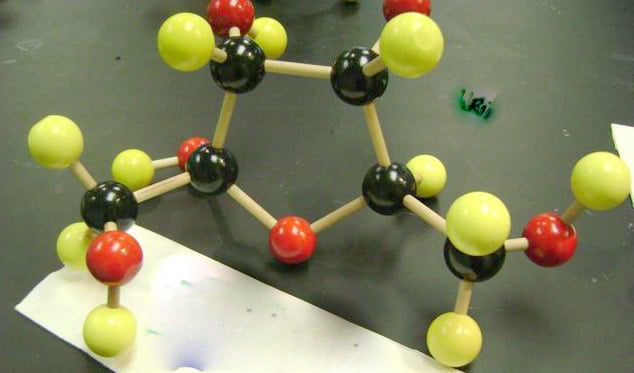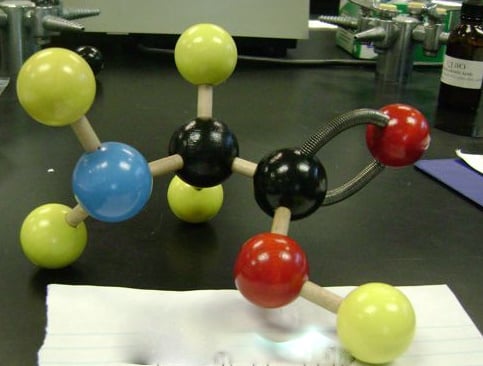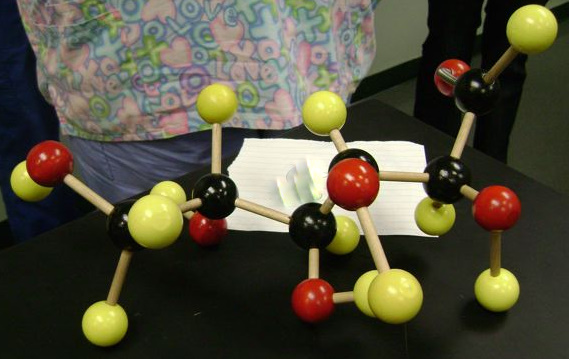Bsc1010c Chapter 4: Carbon And The Molecular Diversity Of Life Test!

This covers the SCC- BSC 1010c chapter 4 section and has pics from lab.
- 1.
What is the 2nd most important element after Hydrogen?
- A.
Nitrogen
- B.
Carbon
- C.
Oxygen
- D.
Sulfur
Correct Answer
B. CarbonExplanation
Carbon is considered the second most important element after Hydrogen because it is the basis of organic chemistry. It is present in all living organisms and is the key component of many essential molecules, such as proteins, carbohydrates, and nucleic acids. Carbon has the unique ability to form long chains and complex structures, allowing for the vast diversity of organic compounds found in nature. Additionally, carbon's ability to form stable covalent bonds with other elements makes it crucial for the formation of stable molecules. Overall, carbon's versatility and prevalence in biological systems make it a fundamental element in the study of life and chemistry.Rate this question:
-
- 2.
Organic chemistry is the study of?
- A.
All the elements
- B.
The 4 major elements
- C.
Carbon compounds
Correct Answer
C. Carbon compoundsExplanation
Organic chemistry is the study of carbon compounds. This branch of chemistry focuses on the structure, properties, composition, reactions, and synthesis of organic compounds, which contain carbon atoms. It examines the behavior of carbon-based molecules and their interactions with other substances. By understanding organic chemistry, scientists can gain insights into the properties and reactions of a wide range of compounds, including those found in living organisms and many industrial products.Rate this question:
-
- 3.
Hydrocarbons are organic molecules that contain
- A.
Hydrogen and carbon
- B.
Hydrogen, carbon and oxygen
- C.
Carbon and oxygen
Correct Answer
A. Hydrogen and carbonExplanation
Hydrocarbons are organic molecules that consist of only hydrogen and carbon atoms. They are the simplest form of organic compounds and are found abundantly in nature, including fossil fuels such as petroleum and natural gas. The absence of oxygen in hydrocarbons distinguishes them from other organic molecules that may contain oxygen atoms, such as alcohols or carboxylic acids. Therefore, the correct answer is "hydrogen and carbon".Rate this question:
-
- 4.
What has the same molecular formula but different structures and properties?
Correct Answer
Isomers
isomers
Isomer
isomerExplanation
Isomers are compounds that have the same molecular formula but different structures and properties. This means that they have the same number and types of atoms, but the arrangement of these atoms is different. Due to this difference in structure, isomers can have different physical and chemical properties. For example, they may have different boiling points, melting points, or reactivity. Isomers are important in chemistry as they can have different biological activities and can be used in various applications such as drug development and materials science.Rate this question:
- 5.
Name 3 types of isomers:
- A.
Structural, geometric, trans isomer
- B.
Geometric, enantiomers, structural
- C.
Cis isomer, geometric, structural
- D.
Structural, enantiomer, trans isomer
Correct Answer
B. Geometric, enantiomers, structuralExplanation
The correct answer is geometric, enantiomers, structural. Geometric isomers are compounds that have the same molecular formula but differ in the arrangement of their atoms in space. Enantiomers are mirror images of each other and have the same molecular formula but differ in their spatial arrangement. Structural isomers have the same molecular formula but differ in the connectivity of their atoms.Rate this question:
-
- 6.
Name 2 types of geometric isomers:
Correct Answer
cis isomer, trans isomer
cisisomer, transisomerExplanation
The correct answer is cis isomer and trans isomer. These are two types of geometric isomers that occur when two substituents are attached to a double bond and differ in their spatial arrangement. In the cis isomer, the substituents are on the same side of the double bond, while in the trans isomer, the substituents are on opposite sides of the double bond. The terms "cisisomer" and "transisomer" are incorrect and not commonly used to describe geometric isomers.Rate this question:
- 7.
An isomer compound that has two X's on the same side is called a:
- A.
Cis isomer
- B.
Trans isomer
Correct Answer
A. Cis isomerExplanation
A compound that has two X's on the same side is called a cis isomer. In a cis isomer, the two X's are located on the same side of the molecule, while in a trans isomer, the two X's are located on opposite sides. This distinction is important in chemistry as it affects the physical and chemical properties of the compound.Rate this question:
-
- 8.
A compound that has the same number of atoms of the same electrons but different structures and different properties is called a(n):
- A.
Structural isomer
- B.
Geometric isomer
- C.
Isomer
- D.
Enantiomer
Correct Answer
C. IsomerExplanation
An isomer is a compound that has the same number of atoms and electrons but different structures and properties. Isomers can have different arrangements of atoms or different spatial arrangements, resulting in distinct chemical and physical properties. Therefore, the correct answer is isomer.Rate this question:
-
- 9.
What kind of isomer has mirror images of each other?
- A.
Structural
- B.
Geometric
- C.
Enantiomer
Correct Answer
C. EnantiomerExplanation
Enantiomers are a type of isomer that have mirror images of each other. They are non-superimposable and have the same molecular formula but differ in their spatial arrangement. Enantiomers are often referred to as "left-handed" and "right-handed" versions of a molecule due to their mirror image nature. This property is important in fields such as pharmacology, where different enantiomers of a drug can have different effects on the body.Rate this question:
-
- 10.
What kind of isomers are important in the pharmaceutical world?
- A.
Structural
- B.
Geometric
- C.
Enantiomer
Correct Answer
C. EnantiomerExplanation
Enantiomers are important in the pharmaceutical world because they are mirror images of each other and have the same chemical formula but different spatial arrangements. This means that they can have different effects on the human body, with one enantiomer potentially being beneficial while the other may be ineffective or even harmful. Pharmaceutical companies need to carefully study and test enantiomers to ensure that they are producing drugs with the desired therapeutic effects and minimal side effects.Rate this question:
-
- 11.
Identify this chemical group: -OH
Correct Answer
Hydroxyl
hydroxylExplanation
The chemical group -OH is called hydroxyl. It is a functional group consisting of an oxygen atom bonded to a hydrogen atom. The hydroxyl group is commonly found in alcohols and phenols, and it imparts specific properties to the compounds it is present in.Rate this question:
- 12.
Hydroxyl + Carbonyl forms a:
Correct Answer
Carboxyl
carboxylExplanation
When a hydroxyl group (-OH) and a carbonyl group (C=O) come together, they form a carboxyl group (-COOH). This functional group is commonly found in carboxylic acids and is characterized by the presence of a carbon atom double-bonded to an oxygen atom and single-bonded to a hydroxyl group and another oxygen atom. The combination of the hydroxyl and carbonyl groups results in the formation of the carboxyl group, which is represented by the chemical formula -COOH.Rate this question:
- 13.
A carbon atom joined to an oxygen atom by a double bond is what chemical group?
Correct Answer
Carbonyl
carbonylExplanation
A carbon atom joined to an oxygen atom by a double bond is known as a carbonyl group. The double bond between the carbon and oxygen atoms creates a strong and stable bond, giving the carbonyl group its characteristic properties and reactivity. Carbonyl groups are commonly found in various organic compounds, such as aldehydes and ketones, and play a crucial role in many chemical reactions.Rate this question:
- 14.
A nitrogen atom bonded to 2 hydrogen atom is called an:
Correct Answer
Amino
aminoExplanation
The correct answer is "amino." A nitrogen atom bonded to 2 hydrogen atoms is called an amino group. Amino groups are commonly found in organic compounds such as amino acids, which are the building blocks of proteins. They are characterized by the presence of a nitrogen atom bonded to two hydrogen atoms and are important for various biological processes.Rate this question:
- 15.
What chemical group is this? -SH
Correct Answer
Sulfhydryl
sulfhydrylExplanation
The chemical group represented by -SH is called sulfhydryl. It is also sometimes spelled as sulfhydryl. This group consists of a sulfur atom bonded to a hydrogen atom and is commonly found in organic compounds. It is known for its ability to form strong covalent bonds with other atoms, making it important in various biological and biochemical processes.Rate this question:
- 16.
What group is this?
Correct Answer
Phosphate
phosphate - 17.
What group has 1 carbon bonded with 3 hydrogens?
Correct Answer
Methyl
methylbbExplanation
The group that has 1 carbon bonded with 3 hydrogens is called a methyl group. A methyl group consists of a carbon atom bonded to three hydrogen atoms. It is commonly found in organic compounds and is often represented by the symbol "CH3". The other option, "methylbb", is not a valid term or group.Rate this question:
- 18.
A carbonyl group found in the middle of a carbon skeleton is a(n):
- A.
Acetone
- B.
Ketone
Correct Answer
B. KetoneExplanation
A carbonyl group found in the middle of a carbon skeleton is referred to as a ketone. Ketones are characterized by the presence of a carbonyl group (C=O) bonded to two other carbon atoms. Acetone, on the other hand, is a specific type of ketone with the molecular formula (CH3)2CO and is commonly used as a solvent. Therefore, the correct answer for a carbonyl group found in the middle of a carbon skeleton is ketone.Rate this question:
-
- 19.
Amino can be found in what example?
- A.
Fructose
- B.
Glycerol
- C.
Glycine
Correct Answer
C. GlycineExplanation
Glycine is an example of an amino acid. Amino acids are the building blocks of proteins and are essential for various biological processes. Glycine is the smallest and simplest amino acid, consisting of a hydrogen atom as its side chain. It is involved in the synthesis of proteins, neurotransmitters, and other important molecules in the body. Therefore, glycine can be found as an example of an amino acid.Rate this question:
-
- 20.
An aldehyde carbonyl can be found in what example?
- A.
Glycerol
- B.
Fructose (chain)
- C.
Glucose (chain)
Correct Answer
C. Glucose (chain)Explanation
An aldehyde carbonyl can be found in glucose (chain) because glucose is an aldose, which means it contains an aldehyde functional group. This aldehyde group consists of a carbon atom double bonded to an oxygen atom and single bonded to a hydrogen atom. In the chain form of glucose, the aldehyde carbonyl group is located at the end of the molecule. Glycerol and fructose do not contain aldehyde carbonyl groups.Rate this question:
-
- 21.
What example has a ketone carbonyl in it?
- A.
Glucose (chain)
- B.
Fructose (chain)
- C.
Glycine
- D.
Glycerol
Correct Answer
B. Fructose (chain)Explanation
Fructose is the correct answer because it contains a ketone carbonyl group. A ketone carbonyl is a functional group consisting of a carbon double-bonded to an oxygen atom, with two other carbon groups attached to the same carbon atom. In the case of fructose, the ketone carbonyl group is located within the chain structure of the molecule.Rate this question:
-
- 22.
Identify:
- A.
Glucose (chain)
- B.
Fructose (chain)
- C.
Glucose (ring)
- D.
Fructose (ring)
Correct Answer
B. Fructose (chain)Explanation
Fructose can exist in both chain and ring forms. However, the given answer specifically mentions "fructose (chain)", indicating that it is referring to the chain form of fructose. This is different from the other options mentioned, which include glucose in both chain and ring forms. Therefore, the correct answer is fructose (chain).Rate this question:
-
- 23.
Identify:
- A.
Fructose (chain)
- B.
Fructose (ring)
- C.
Glucose (chain)
- D.
Glucose (ring)
Correct Answer
D. Glucose (ring)Explanation
The correct answer is glucose (ring). Glucose can exist in two forms: a chain form and a ring form. In the ring form, glucose molecules form a six-membered ring structure. This is the more stable and predominant form of glucose in aqueous solutions. The ring structure is formed when the hydroxyl group on carbon 5 reacts with the aldehyde group on carbon 1, resulting in the formation of a hemiacetal linkage. Therefore, glucose in the ring form is the correct answer.Rate this question:
-
- 24.
Identify:
- A.
Glycine
- B.
Glycerol
- C.
Glucose (chain)
- D.
Fructose (chain)
Correct Answer
B. GlycerolExplanation
Glycerol is a three-carbon molecule that is a component of lipids, such as triglycerides. It is not a sugar like glucose or fructose, and it does not contain an amino acid like glycine. Therefore, the correct answer is glycerol.Rate this question:
-
- 25.
Identify:
- A.
Fructose (ring)
- B.
Glucose (ring)
- C.
Glycerol
- D.
Glycine
Correct Answer
A. Fructose (ring)Explanation
Fructose is a monosaccharide that exists in a ring form. It is commonly found in fruits and is a major component of table sugar. The mention of "ring" in the answer indicates that fructose is the correct option. Glucose also exists in a ring form, but it is not mentioned in the answer. Glycerol and glycine are not sugars and do not have a ring structure, so they can be eliminated as options.Rate this question:
-
- 26.
Identify:
- A.
Glucose
- B.
Glycine
- C.
Glycerol
Correct Answer
B. GlycineExplanation
Glycine is the correct answer because it is an amino acid that is a building block of proteins. Glucose is a simple sugar that is used as a source of energy in the body, while glycerol is a component of fats and oils. Out of the three options, only glycine is an amino acid.Rate this question:
-
- 27.
Identify:
- A.
Fructose (chain)
- B.
Glucose (chain)
- C.
Glycine
- D.
Glycerol
Correct Answer
B. Glucose (chain)Explanation
The correct answer is glucose (chain). Glucose is a simple sugar that can exist in a linear or chain form. It is an important source of energy for the body and is commonly found in foods like fruits, honey, and corn syrup. The other options mentioned, fructose, glycine, and glycerol, are different substances. Fructose is another type of sugar found in fruits, while glycine is an amino acid and glycerol is a type of alcohol.Rate this question:
-
Quiz Review Timeline +
Our quizzes are rigorously reviewed, monitored and continuously updated by our expert board to maintain accuracy, relevance, and timeliness.
-
Current Version
-
Mar 20, 2023Quiz Edited by
ProProfs Editorial Team -
May 22, 2010Quiz Created by
Ptagirl
- Aeronautics Quizzes
- Aerospace Quizzes
- Agricultural Science Quizzes
- Astrology Quizzes
- Astronomy Quizzes
- Atom Quizzes
- Biochemistry Quizzes
- Biology Quizzes
- Biomechanics Quizzes
- Biostatistics Quizzes
- Biotechnology Quizzes
- Botany Quizzes
- Branches Of Science Quizzes
- Cytology Quizzes
- Easy Science Quizzes
- Ecology Quizzes
- Electrical Quizzes
- Embryology Quizzes
- Endocrinology Quizzes
- Engineering Quizzes
- Environmental Science Quizzes
- Epidemiology Quizzes
- Experiment Quizzes
- Forestry Quizzes
- Fossil Quizzes
- Gas Quizzes
- General Science Quizzes
- Genetics Quizzes
- Histology Quizzes
- Human Biology Quizzes
- Integrated Science Quizzes
- Invention Quizzes
- Library Science Quizzes
- Lighting Quizzes
- Liquid Quizzes
- Marine Biology Quizzes
- Microbiology Quizzes
- Molecular Biology Quizzes
- Nature Quizzes
- Neuroscience Quizzes
- Nuclear Science Quizzes
- Oceanography Quizzes
- Physics Quizzes
- Psychology Quizzes
- Science And Technology Quizzes
- Science Glossary Quizzes
- Science Knowledge Quizzes
- Science Practice Quizzes
- Scientific Method Quizzes
- Scientific Notation Quizzes
- Soil Science Quizzes
- Solar System Quizzes
- Solid Quizzes
- Toxicology Quizzes
- Zoology Quizzes
 Back to top
Back to top



